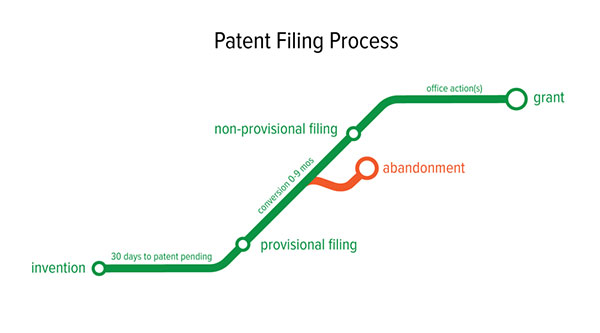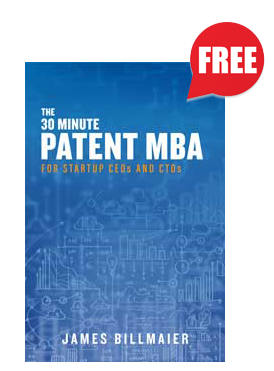This is #5 in our series of chapter excerpts from the book The 30 Minute Patent MBA by TurboPatent CEO Jim Billmaier. Want to get the full ebook for free? Grab it here.
How Do You Obtain a Patent?
Your provisional patent application allows you to file a “mini” version of a patent application at a point where you may not have all the kinks worked out. This lets your company lay claim to your inventions as soon as possible, giving you an early priority date while you continue to develop the idea. You then have up to 12 months to decide whether or not to file the full (non-provisional) patent application, and incorporate any intervening developments into the non-provisional application, all while retaining the early priority date.
 A provisional application will not be reviewed by the government patent examiner until after the non-provisional application is filed, at which point it is important that a provisional application has enough detail to allow the examiner to determine that the information disclosed in the provisional application supports what is disclosed in the non-provisional application. It is extremely important to have a high quality provisional application drafted and filed. Amateur efforts in this process can cause more problems than benefits.
A provisional application will not be reviewed by the government patent examiner until after the non-provisional application is filed, at which point it is important that a provisional application has enough detail to allow the examiner to determine that the information disclosed in the provisional application supports what is disclosed in the non-provisional application. It is extremely important to have a high quality provisional application drafted and filed. Amateur efforts in this process can cause more problems than benefits.
After a non-provisional application is filed, the application will be assigned to an art unit (a small division of the patent office which examines applications on related subject matter). Using an accelerated process (Track One), a response can come very quickly and a patent may be granted in less than a year…Think FedEx for patent applications. The standard application process typically takes approximately 20 months before it lands on an examiner’s desk, and another year or so to process the patent application.
The examiner’s job is essentially to test your patent application and find some reason to reject it. The examiner does this by comparing your patent application to the technical rules on patent drafting as well as comparing it to previously published patent specifications and public literature (referred to as “prior art”).
Once an examiner completes an examination he or she most often issues a rejection and the inventor or the inventor’s representative (a patent professional) must respond to the rejection through what is known as an office action and office action response.
An office action is a formal written correspondence from the patent examiner containing the issues he or she has with your application. Your company’s representative will read the examiner’s remarks and make arguments about the application’s patentability or suggest amendments to the patent application to address the basis for the examiner’s rejection.
While the rejection rate can vary widely between art units and examiners, it is not uncommon for an application to undergo three or more cycles of exchanges with the patent office before a patent application is granted an allowance or a company gives up and abandons the effort. In the event that the application is allowed, the company pays a fee to obtain the final granted patent.
Once granted, the final patent is published, listing the inventors and/or your corporate entity as the owner of this intellectual property.
Congratulations! Your company now has the first granted asset in your patent portfolio.
This has been an excerpt from the book The 30 Minute Patent MBA by Jim Billmaier. Used by permission of the author. Want to get the full ebook for free? Grab it here.





